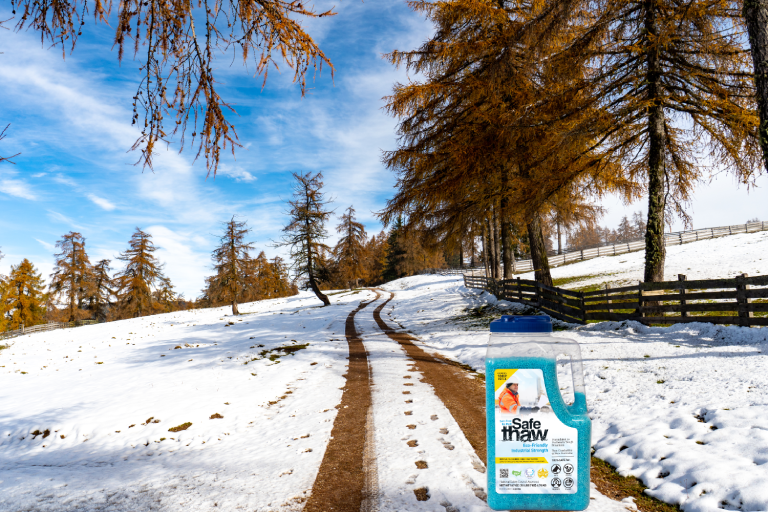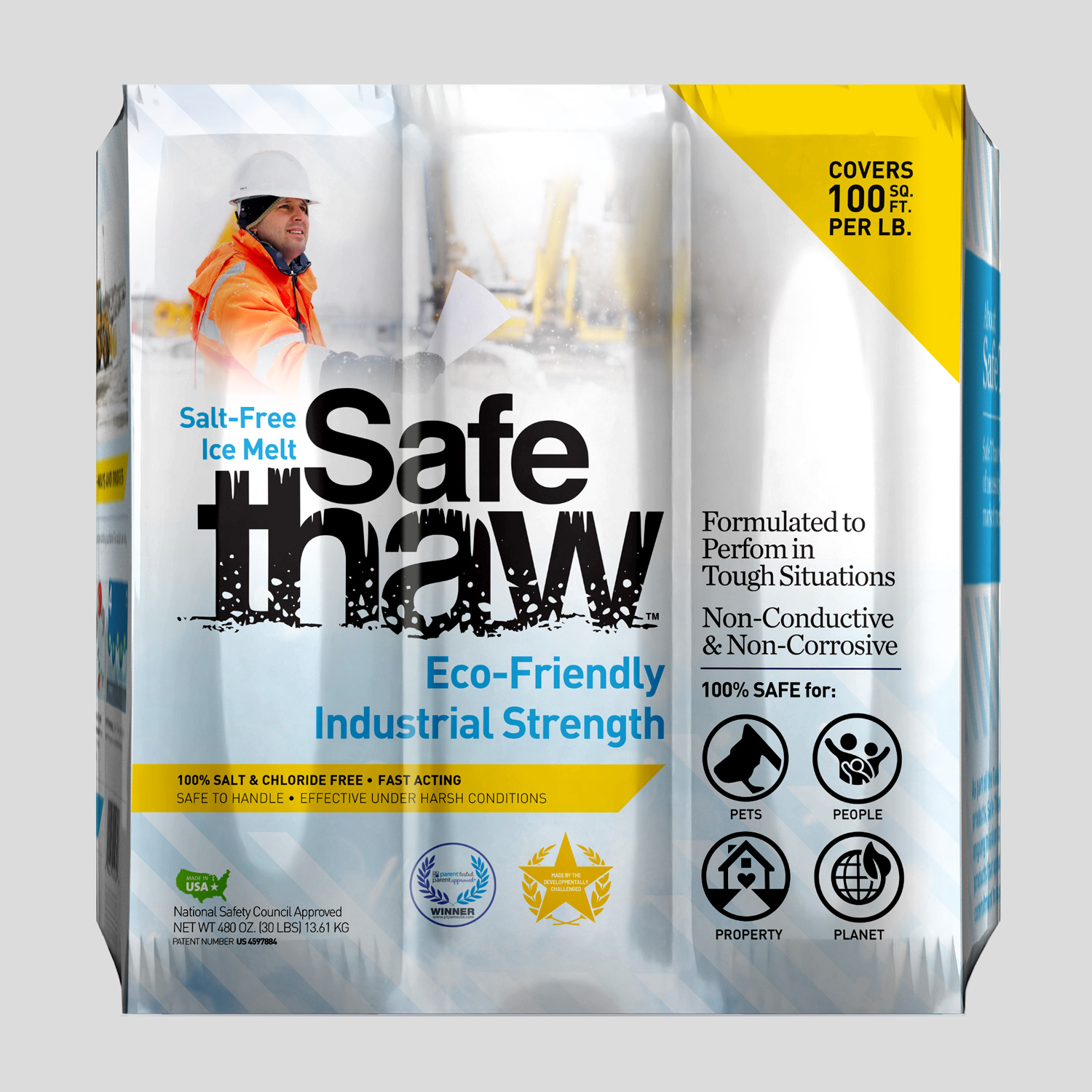Does Salt Really Melt Snow? Exploring the Role of Salt in Snow Removal

Introduction
When the snow begins to fall, the topic of “does salt melt snow” often becomes a point of discussion. While salt is commonly used for snow removal, understanding its function and effectiveness, as well as its limitations, can guide us to make better snow management decisions.

Blizzards Are Here—Stock Up on Safe Thaw Today!
Safe Thaw was created as the ice management solution for tough winter environments. Ideal in commercial and industrial properties, shops, government agencies, bridges, and construction.
Does Salt Melt Snow? The Science Behind It
Salt, scientifically known as sodium chloride, doesn’t so much melt the snow as it disrupts the freezing process. When applied to snow or ice, salt lowers the freezing point of water, causing the ice to melt at lower temperatures than usual.
This process, known as freezing point depression, results in a brine solution that can remain liquid to approximately -18 degrees Celsius (0 degrees Fahrenheit), preventing the formation of ice and making it easier to remove the snow.
Winter Storms Are Here!
Stay Safe with Our 100% Salt And Chloride-Free, Pet Safe Ice Melt.
The Downside Of Using Salt
While the idea that salt melts snow has a basis in science, using it for snow removal is not without its problems.
- Environmental Impact: Salt runoff can cause soil contamination and damage plants and wildlife. It can also seep into groundwater and affect local water sources, posing risks to aquatic life.
- Corrosion: Salt can cause corrosion to concrete, metal, and other materials. This effect can be damaging to buildings, vehicles, and road infrastructure.
- Pet Safety: Salt can be harmful to pets. It can irritate their paws and pose a health risk if ingested.
- Limited Effectiveness: Salt becomes less effective as temperatures drop below its lower limit of efficacy.
The Superior Alternative: Safe Thaw
Given these drawbacks, it’s worth exploring more sustainable, safe, and effective alternatives for snow management. One such alternative is Safe Thaw, a chemical-free, toxin-free ice melt solution.
- Safe Chemistry: Safe Thaw is a high-performance ice melt solution that breaks the surface tension and instantly melts ice, accelerating the melting process. It’s effective across a wide range of temperatures, offering advantages over the traditional salt-based methods.
- People, Pet & Plant Safe: Safe Thaw is 100% salt-free, making it safer for pets and humans. It doesn’t irritate eyes, skin, or paws, and it’s safe even if ingested.
- Surface Safe: Unlike salt, Safe Thaw doesn’t damage surfaces. It’s 100% safe on all surfaces, including decking, concrete, pavers, brick, stone, and more.
- Non-Corrosive & Non-Conductive: Unlike salt, Safe Thaw does not damage machinery or cause short circuits, making it an ideal solution for areas with delicate equipment.
100% Salt & Chloride-Free Ice Melt for Winter Storm Protection.
Conclusion
So, does salt melt snow? Technically, it interferes with the freezing process, causing snow and ice to melt at lower temperatures. However, the environmental, infrastructural, and health-related consequences of salt use pose significant challenges.
Safe Thaw presents a superior, eco-friendly, and pet-friendly alternative for snow and ice management. It’s a testament to how modern solutions can improve upon traditional methods, offering us better ways to cope with winter’s challenges while minimizing harmful impacts.
Contrary to the popular phrase, “there’s no cure for the winter blues,” Safe Thaw offers an efficient and safer solution, ensuring that snow and ice do not hinder our daily lives.
Try Also Our Other Winter Safety Products:
Safe Paw
The Original and #1 Selling Pet and Child Safe Ice Melt for over 20 years. Guaranteed environmentally safe –It won’t harm animals or children, and it won’t damage your property. That’s Safe Paw. Safe Paw can change how winter affects our planet.

Walk On Ice
The handy disposable canister can be taken everywhere, with the same 100% naturally occurring minerals that provide instant traction on ice or snow. Use it on sidewalks, steps, or as an instant traction agent for your car.



